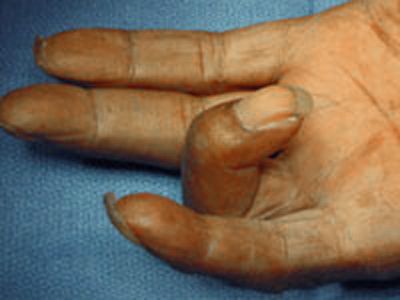
Trigger finger is a condition where your thumb or finger gets stuck in a bent position. It is often preceded by a hand injury or strain, but most often is the result of arthritis. It occurs when the synovial membrane and tendon sheaths around each tendon become inflamed and become less able to bend or flex. This can cause the tendon to catch and get stuck, which results in a locked position.
Symptoms and causes vary from person to person, but there are some common causes of trigger finger. A simple hand exam is enough to confirm if you have trigger finger. Often, no tests or X-rays are needed. However, if you notice a persistent condition, you may want to seek medical attention. Fortunately, trigger finger is usually treatable. Depending on the cause, treatment may be necessary. If the trigger finger is caused by a bacterial infection, you might want to consult a doctor for a diagnosis.
The most common cause of trigger finger is inflammation of the tendons. When the tendons are irritated, they become stuck in a bent position. In severe cases, the finger may even lock in the bent position. Inflammation of the tenosynovum can cause trigger finger, which can be a result of repeated gripping activities. Women and those with diabetes are at an increased risk for trigger finger. For a permanent cure, you must take the proper steps to prevent trigger finger.
Trigger finger is the most common cause of trigger finger. The tendon connects the bones and muscles of the fingers. It pulls on these bones in order to move the fingers. During a bend, the tendons slide through a flexor tendon sheath. A narrowed flexor tendon sheath can lead to trigger finger. This condition also leads to an inflammation of the flexor tendons, which makes it difficult to straighten the finger.
Trigger finger is an inflammation of the flexor tendons of the fingers. Inflammation of these tendons prevents the fingers from moving. Tenosynovium also covers the thumb. When the tendons are inflamed, they cannot slide over the tendon sheath, resulting in a painful locking sensation when the hand is opened. The trigger finger is caused by a stretched flexor tendon.
A tendon is a fibrous cord that attaches a muscle to a bone. Each tendon is protected by a sheath that protects it. Inflammation of the tendon sheath makes it difficult for the tendon to slide over the vagina, resulting in a blocked finger. In addition, this condition can also lead to a blocking sensation that interferes with the ability to open the palm.
There are two types of trigger finger. In the worst case, the trigger may lock in a bent position and must be pulled back with the affected hand. To prevent this, it is important to stop the force exerting pressure on the fingers. Trigger finger is also more common in people with certain medical conditions. This may be the result of heavy use of the thumb or fingers. Symptoms may begin without a single injury, but may appear after several weeks of heavy hand use or grasping.
In some cases, the tendons of the index finger may also be inflamed. This causes blockage of the finger, which is painful for the victim. It is important to find out the cause of this condition. If you suffer from trigger finger, it could be due to arthritis, a bone in your finger, a problem with your tendon sheath, or a bacterial infection.
There are several causes of trigger finger, and trigger finger is the most common. In some cases, the finger will be permanently flexed. In other cases, the tendon will pull away from the bone. If constipation is chronic, surgery may be required. In the meantime, you can try another method to get rid of it. This is a common cause of trigger finger and you should check with your doctor at Nittaya Suttikul to find out if it is causing you pain.
